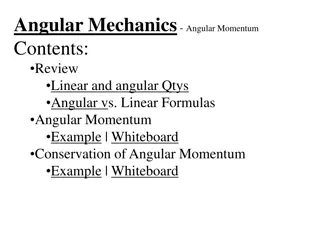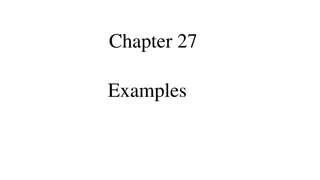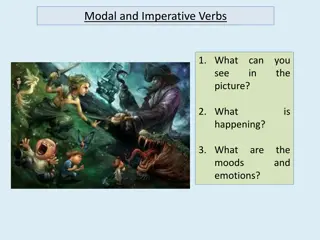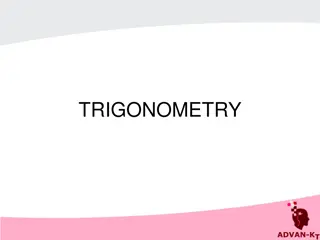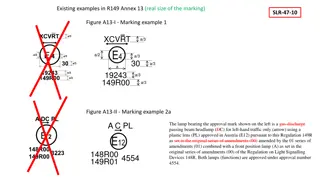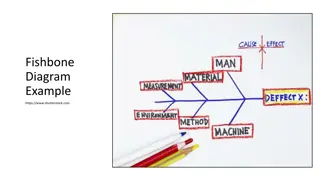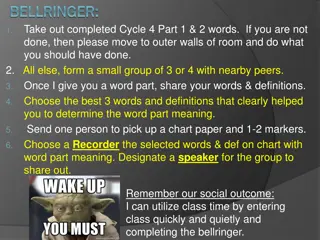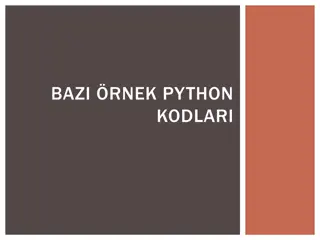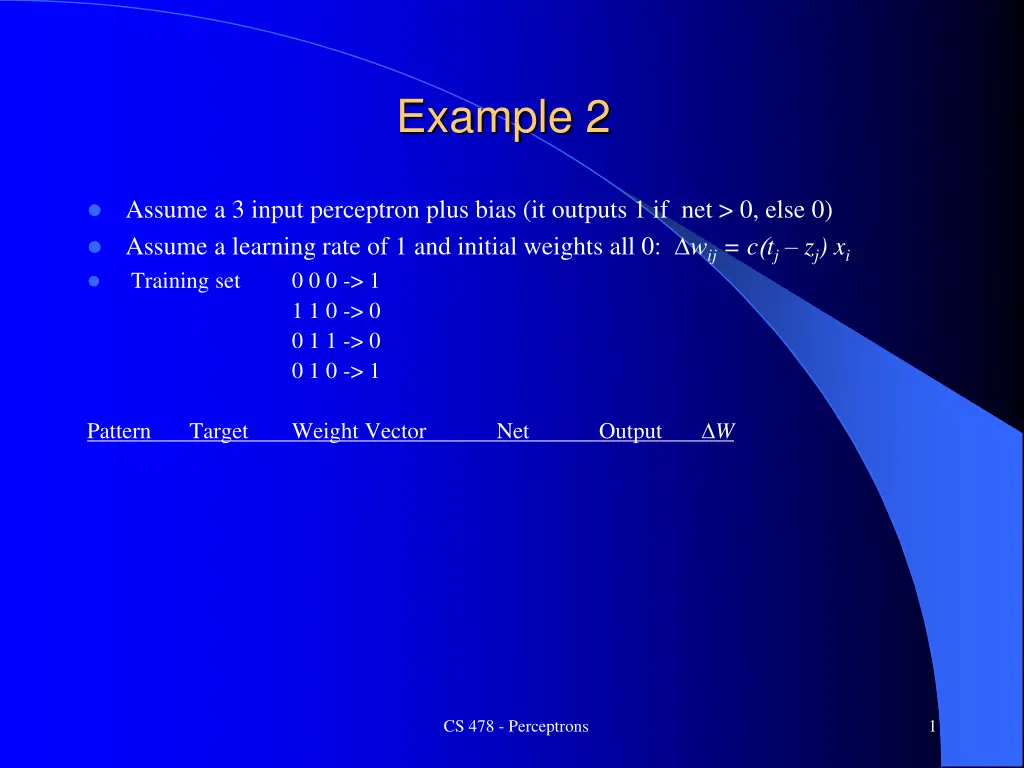
Understanding 3-Input Perceptron with Bias and Learning Rate
Explore an example of a 3-input perceptron with bias that outputs values based on a specified condition. Follow the training set with initial weights set to zero and observe the weight vector adjustments with each iteration. Learn about the impact of the learning rate on the convergence of the perceptron model.
Download Presentation

Please find below an Image/Link to download the presentation.
The content on the website is provided AS IS for your information and personal use only. It may not be sold, licensed, or shared on other websites without obtaining consent from the author. If you encounter any issues during the download, it is possible that the publisher has removed the file from their server.
You are allowed to download the files provided on this website for personal or commercial use, subject to the condition that they are used lawfully. All files are the property of their respective owners.
The content on the website is provided AS IS for your information and personal use only. It may not be sold, licensed, or shared on other websites without obtaining consent from the author.
E N D
Presentation Transcript
Example 2 Assume a 3 input perceptron plus bias (it outputs 1 if net > 0, else 0) Assume a learning rate of 1 and initial weights all 0: wij = c(tj zj)xi Training set 0 0 0 -> 1 1 1 0 -> 0 0 1 1 -> 0 0 1 0 -> 1 W Pattern Target Weight Vector Net Output CS 478 - Perceptrons 1
Example 2 Assume a 3 input perceptron plus bias (it outputs 1 if net > 0, else 0) Assume a learning rate of 1 and initial weights all 0: wij = c(tj zj)xi Training set 0 0 0 -> 1 1 1 0 -> 0 0 1 1 -> 0 0 1 0 -> 1 W Pattern 0 0 0 1 Target 1 Weight Vector 0 0 0 0 Net Output CS 478 - Perceptrons 2
Example 2 Assume a 3 input perceptron plus bias (it outputs 1 if net > 0, else 0) Assume a learning rate of 1 and initial weights all 0: wij = c(tj zj)xi Training set 0 0 0 -> 1 1 1 0 -> 0 0 1 1 -> 0 0 1 0 -> 1 W 0 0 0 1 -1 -1 0 -1 Pattern 0 0 0 1 1 1 0 1 0 1 1 1 Target 1 0 0 Weight Vector 0 0 0 0 0 0 0 1 -1 -1 0 0 Net 0 1 Output 0 1 CS 478 - Perceptrons 3
Example 2 Assume a 3 input perceptron plus bias (it outputs 1 if net > 0, else 0) Assume a learning rate of 1 and initial weights all 0: wij = c(tj zj)xi Training set 0 0 0 -> 1 1 1 0 -> 0 0 1 1 -> 0 0 1 0 -> 1 W 0 0 0 1 -1 -1 0 -1 0 0 0 0 0 1 0 1 Pattern 0 0 0 1 1 1 0 1 0 1 1 1 0 1 0 1 Target 1 0 0 1 Weight Vector 0 0 0 0 0 0 0 1 -1 -1 0 0 -1 -1 0 0 Net 0 1 -1 -1 Output 0 1 0 0 CS 478 - Perceptrons 4
Example 2 Assume a 3 input perceptron plus bias (it outputs 1 if net > 0, else 0) Assume a learning rate of 1 and initial weights all 0: wij = c(tj zj)xi Training set 0 0 0 -> 1 1 1 0 -> 0 0 1 1 -> 0 0 1 0 -> 1 W 0 0 0 1 -1 -1 0 -1 0 0 0 0 0 1 0 1 0 0 0 0 0 0 0 0 0 -1 -1 -1 0 1 0 1 Pattern 0 0 0 1 1 1 0 1 0 1 1 1 0 1 0 1 0 0 0 1 1 1 0 1 0 1 1 1 0 1 0 1 Target 1 0 0 1 1 0 0 1 Weight Vector 0 0 0 0 0 0 0 1 -1 -1 0 0 -1 -1 0 0 -1 0 0 1 -1 0 0 1 -1 0 0 1 -1 -1 -1 0 -1 0 -1 1 Net 0 1 -1 -1 1 0 1 -1 Output 0 1 0 0 1 0 1 0 CS 478 - Perceptrons 5

